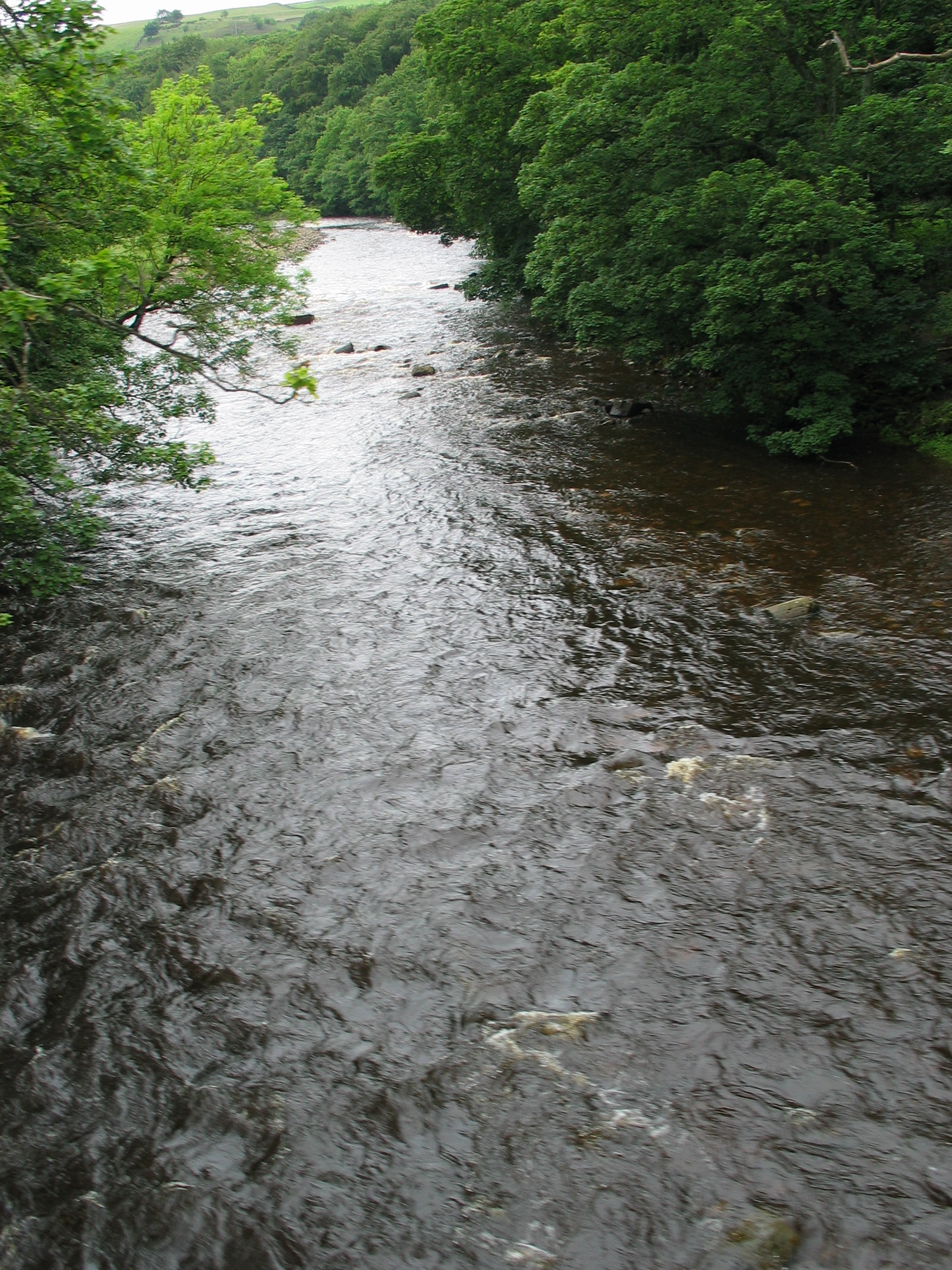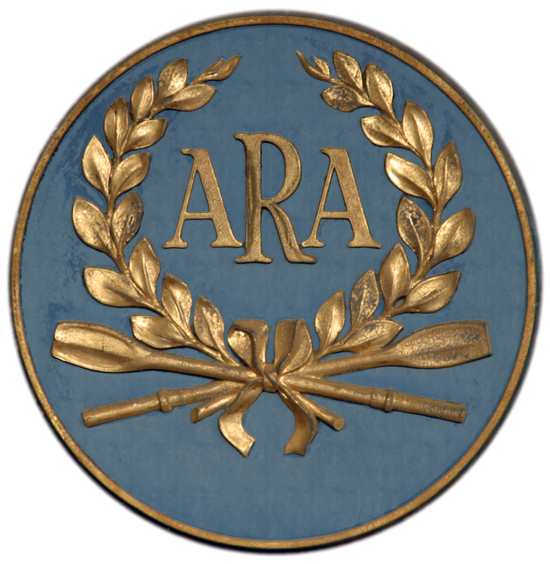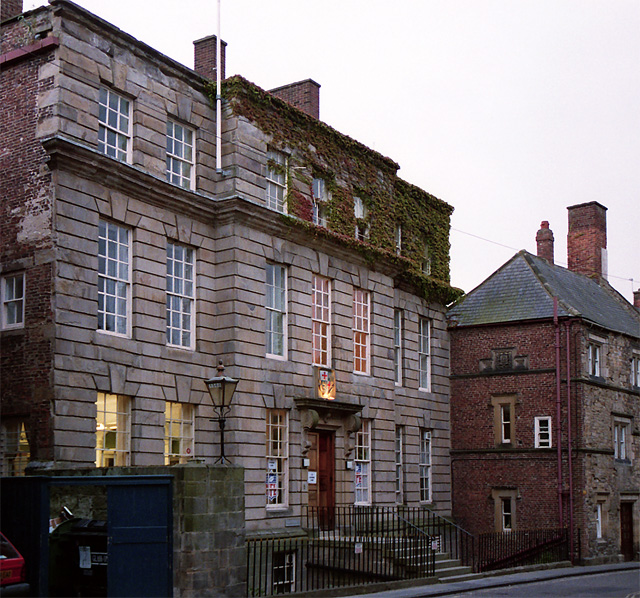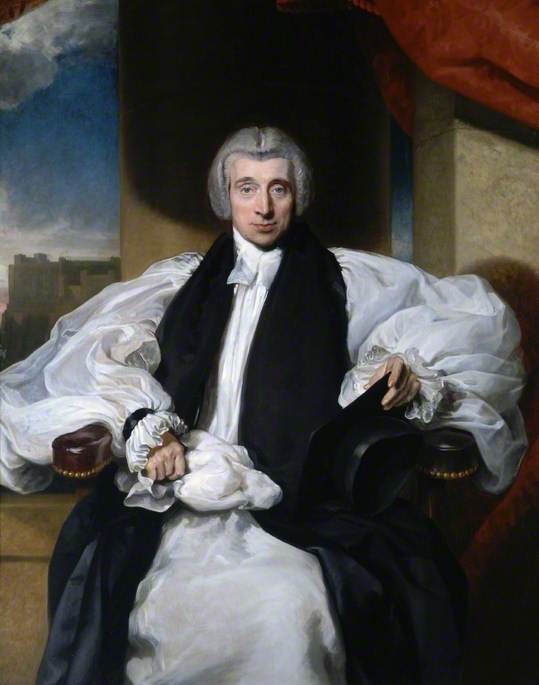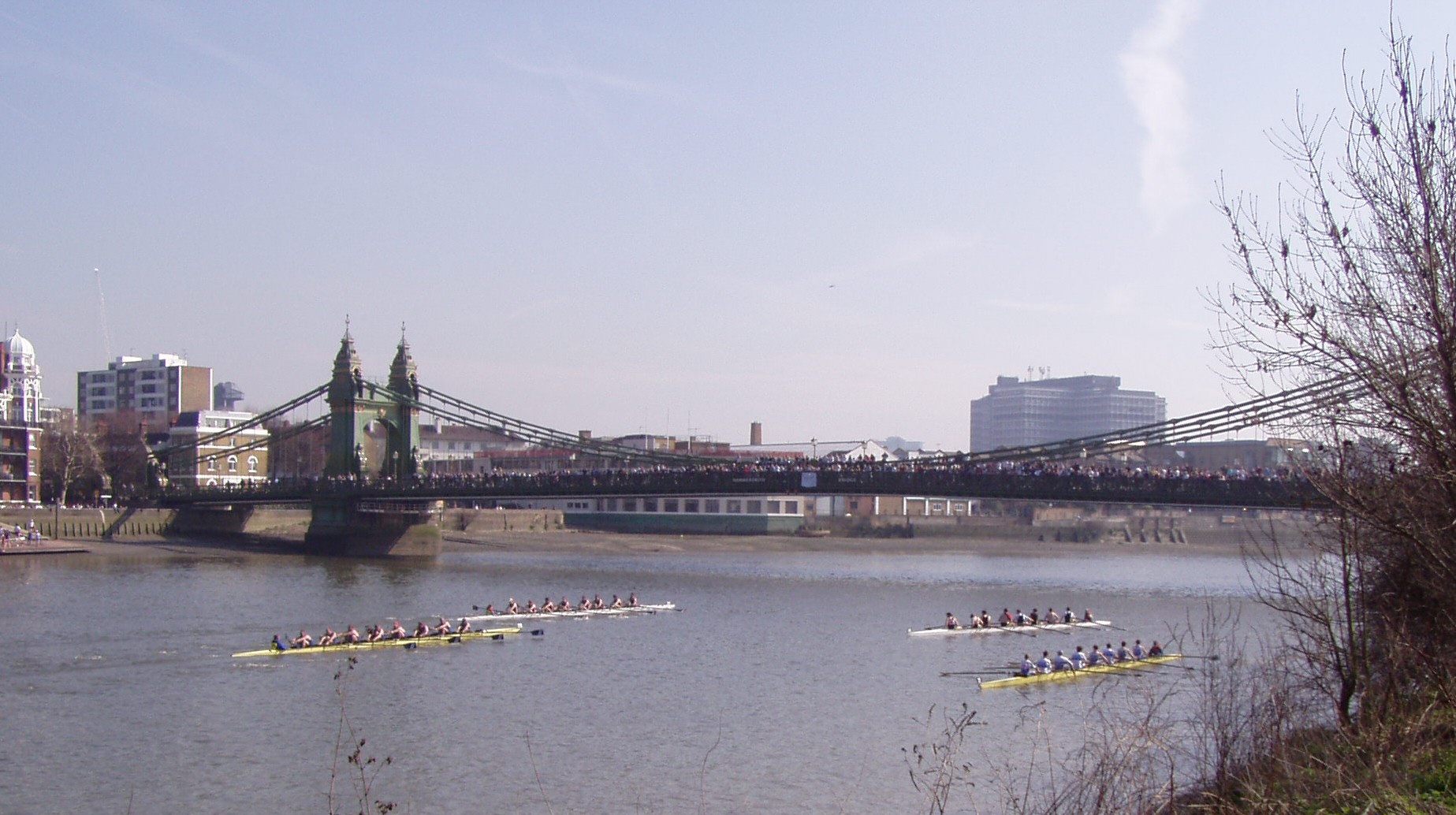|
St John's College Boat Club (Durham)
St John's College Boat Club (SJCBC) is the rowing club of St John's College, Durham University, England. It was founded in 1910 and is one of the oldest boat clubs in Durham. History Rowing began at St John's College in October 1910 when trials were held to select a crew for a IV. In 1911, however, the boat house was built thanks to the help of Revd Watts-Ditchfield who telling commented, "we have not won anything yet but can see improvements." Henry Ganderton played a leading role in developing the Club in the 1910s and 1920s. In the 1930s James Atkinson likewise made a great impression on rowing at St John's, captaining for both SJCBC and the University. Structure The club is entirely run by students and attracts most of its members from St John's College – though anyone can join with the permission of the Captain of Boats. The club has around 80 active members. It is run by an executive committee, elected at the club's annual general meeting in June. These are Cap ... [...More Info...] [...Related Items...] OR: [Wikipedia] [Google] [Baidu] |
River Wear
The River Wear (, ) in North East England rises in the Pennines and flows eastwards, mostly through County Durham to the North Sea in the City of Sunderland. At long, it is one of the region's longest rivers, wends in a steep valley through the cathedral city of Durham and gives its name to Weardale in its upper reach and Wearside by its mouth. Etymology The origin behind the hydronym ''Wear'' is uncertain but is generally understood to be Celtic. The ''River Vedra'' on the Roman Map of Britain may very well be the River Wear. The name may be derived from Brittonic ''*wejr'' (<''*wẹ:drā''), which meant "a bend" (c.f ''-gwair-''). An alternative but very problematic etymology might involve ''*wẹ:d-r-'', from a lengthened form of the |
British Rowing
British Rowing, formerly the Amateur Rowing Association (ARA), is the national governing body for the sport of rowing (both indoor and on-water rowing). It is responsible for the training and selection of individual rowers and crews representing Great Britain and England, and for participation in and the development of rowing in England. Scottish Rowing (formerly SARA) and Welsh Rowing (formerly WARA) oversee governance in their respective countries, organise their own teams for the Home International Regatta and input to the GB team organisation. British Rowing is a member of the British Olympic Association and the World Rowing Federation, also known as FISA. History The ARA (as the predecessor of British Rowing) had it roots in the desire to form crews drawn from the leading English clubs 'for the purpose of defeating the foreign or colonial invader' although in fact this aim was not fulfilled until much later. A series of meetings were held in Putney from 1877 culminati ... [...More Info...] [...Related Items...] OR: [Wikipedia] [Google] [Baidu] |
Durham College Rowing
Durham College Rowing (commonly abbreviated to DCR) represents all sixteen college boat clubs in Durham University, encompassing approximately half of the rowers, scullers and coxes in the region of North East England. As well as organising trailers to competitions off the River Wear, DCR also organises inter-collegiate events, coaching and launch-driving courses, swim tests, and implement and enforce the regulations as set out by the Durham University Rowing Board. DCR also provides a forum for college captains to meet and discuss current rowing events, particularly safety issues, with each other and with the executive committee. The executive committee consists of the captain of colleges, who represents college rowers at a university and regional level, a coaching coordinator, who arranges coaching and launch driving courses, and also a treasurer, secretary and press officer. The regatta secretary sits on the executive committee and also leads the regatta committee, who are ... [...More Info...] [...Related Items...] OR: [Wikipedia] [Google] [Baidu] |
St John's College (Durham)
St John's College is a college of the University of Durham, United Kingdom. It is one of only two "recognised colleges" of the university, the other being St Chad's. This means that it is financially and constitutionally independent of the university and has a greater degree of administrative independence than the other, "maintained", colleges. However, to maintain its status as a recognised college, the university council must approve the appointment of its principal and be notified of changes to its constitution. St John's is Durham's second smallest college and comprises John's Hall for undergraduate and postgraduate students studying any university course and Cranmer Hall (named after Thomas Cranmer and with its own master or Warden), an Anglican theological college in the open evangelical tradition. History Founded as a Church of England theological college in 1909, it became a full constituent college of the university in 1919. In 1958 it was divided into Cranmer Hall ... [...More Info...] [...Related Items...] OR: [Wikipedia] [Google] [Baidu] |
Durham University
, mottoeng = Her foundations are upon the holy hills ( Psalm 87:1) , established = (university status) , type = Public , academic_staff = 1,830 (2020) , administrative_staff = 2,640 (2018/19) , chancellor = Sir Thomas Allen , vice_chancellor = Karen O’Brien , city = Durham and Stockton-on-Tees , state = , country = England , campus_size = , students = () , undergrad = () , postgrad = () , free_label = Student newspaper , free = '' Palatinate'' , colours = Palatinate , endowment = £98.2 million , budget = £393.2 million , academic_affiliations = Russell Group ACU Coimbra Group EUA N8 Group Matariki Network of Universities University of the Arctic Universities UK Virgo Consortium , sporting_affiliations = BUCS, Wallace Group , sports_free_label = Sports team , sports_free = Team Durham , website = , logo = , embedded = Durham University (legally the University of Durham) is a collegiate public research univ ... [...More Info...] [...Related Items...] OR: [Wikipedia] [Google] [Baidu] |
Rowing Club
A rowing club is a club for people interested in the sport of Rowing. Rowing clubs are usually near a body of water, whether natural or artificial, that is large enough for manoeuvering the shells (rowing boats). Clubs usually have a boat house with racks to store boats, and a dock or slipway to get them into the water. Many clubs host rowing competitions, known as regattas, on a certain weekend every year, and send a competitive team to other regattas. There are also "indoor rowing" clubs which only have rowing machines. There are indoor rowing regattas, such as CRASH-B Sprints which takes place every winter in Boston. Finally, there are rowing clubs which are not physical entities at all. For example, many high schools and universities maintain an alumni rowing club. Members of these clubs typically train on their own and meet up with their fellow club members to race. The club status must be maintained in order to participate in events sanctioned by USRowing or other governing ... [...More Info...] [...Related Items...] OR: [Wikipedia] [Google] [Baidu] |
Durham, England
Durham ( , locally ), is a cathedral city and civil parish on the River Wear, County Durham, England. It is an administrative centre of the County Durham District, which is a successor to the historic County Palatine of Durham (which is different to both the ceremonial county and district of County Durham). The settlement was founded over the final resting place of St Cuthbert. Durham Cathedral was a centre of pilgrimage in medieval England while the Durham Castle has been the home of Durham University since 1832. Both built in 11th-century, the buildings were designated as a World Heritage Site by UNESCO in 1986. HM Prison Durham is also located close to the city centre and was built in 1816. Name The name "Durham" comes from the Brythonic element , signifying a hill fort and related to -ton, and the Old Norse , which translates to island.Surtees, R. (1816) ''History and Antiquities of the County Palatine of Durham'' (Classical County Histories) The Lord Bishop of Dur ... [...More Info...] [...Related Items...] OR: [Wikipedia] [Google] [Baidu] |
St John's College, Durham
St John's College is a college of the University of Durham, United Kingdom. It is one of only two "recognised colleges" of the university, the other being St Chad's. This means that it is financially and constitutionally independent of the university and has a greater degree of administrative independence than the other, "maintained", colleges. However, to maintain its status as a recognised college, the university council must approve the appointment of its principal and be notified of changes to its constitution. St John's is Durham's second smallest college and comprises John's Hall for undergraduate and postgraduate students studying any university course and Cranmer Hall (named after Thomas Cranmer and with its own master or Warden), an Anglican theological college in the open evangelical tradition. History Founded as a Church of England theological college in 1909, it became a full constituent college of the university in 1919. In 1958 it was divided into Cranmer Hall t ... [...More Info...] [...Related Items...] OR: [Wikipedia] [Google] [Baidu] |
British Universities And Colleges Sport
British Universities & Colleges Sport (BUCS) is the governing body for higher education sport in the United Kingdom. BUCS was formed in June 2008 following a merger of British Universities Sports Association (BUSA) and University College Sport (UCS) organisations. BUCS is responsible for organising more than 52 inter-university sports within the UK and representative teams for the World University Championships and the World University Games. BUCS is a membership organisation for over 165 universities and colleges in the UK, with 6,000 teams competing across 850 leagues. Anne, Princess Royal is Patron of BUCS. Sports BUCS has 52 sports represented within the leagues and events. They are: *American football *Archery *Athletics *Badminton *Baseball and softball *Basketball *Boxing *Canoeing *Clay pigeon shooting *Climbing *Cricket *Cycling * Diving *Equestrian *Fencing *Football *Futsal *Gaelic football *Golf *Gymnastics *Handball *Hockey *Jiu jitsu *Judo *Karate * Korfball ... [...More Info...] [...Related Items...] OR: [Wikipedia] [Google] [Baidu] |
Head Of The River Race
The Head of the River Race (HORR) is an against-the-clock ('processional') rowing race held annually on the River Thames in London, England between eights, other such races being the Schools' Head of the River Race, Women's Head of the River Race and Veterans' Head of the River Race. Its competitors are, with a few experienced junior exceptions, seniors of UK or overseas competitors and it runs with the ebb tide down the 4.25 mile (6.8 km) Championship Course from Mortlake to Putney which hosts the Oxford and Cambridge head-to-head races usually between one and two weeks later. The race was founded on a much smaller scale, in 1925, by Steve Fairbairn – an influential rower then rowing coach of the early 20th century, who transformed the sport into one involving today's lengthier slides enabling conventional (Fairbairnized) racing shell propulsion. History The race was founded by the rowing coach Steve Fairbairn who was a great believer in the importance of distance ... [...More Info...] [...Related Items...] OR: [Wikipedia] [Google] [Baidu] |
Women's Eights Head Of The River Race
The Women's Eights Head of the River Race (WEHoRR) is a processional rowing race held annually on the Tideway of the River Thames in London on the Championship Course from Mortlake to Putney. A mirror of the Eights Head of the River for male crews, it is held a fortnight earlier when the tides are similar. It is raced on the outgoing tide and starting around one hour after high tide in order to maximise advantage from the tidal flow. Around 300 crews of women (with the occasional male coxswain) compete for over a dozen trophies and pennants. There are categories for beginners, elite and veteran rowers. History The race was first held in 1927 following the first running of the men's version in 1926. At first it was simply a match between Ace and Weybridge LARC. This race was run as a side-by-side race, with Weybridge winning in a boat borrowed from Thames Rowing Club. The second year featured the same two crews, and the same result. In 1929, for the third race, there was ... [...More Info...] [...Related Items...] OR: [Wikipedia] [Google] [Baidu] |
Boston Rowing Marathon
The Boston Rowing Marathon is a rowing head race taking place on the third Sunday of September annually in Lincolnshire, England, over the exceptionally long distance of 49.2 km (30.6 miles). The course is along the River Witham from Lincoln to Boston. Overview The event started as a one off in 1946, a pub bet, and was big news for the town. A single coxed four of seniors rowed from central Boston to the Brayford Pool in central Lincoln (against the river flow) and took around six hours. A distance, measured at the time, of 34 miles. On 26th October 1947, a teenaged coxed four from the Boston Rowing Club, took on the challenge of beating the 1946 time. Aubrey Fox, Deg Borman, Bill Gale and Bill Lockwood (AKA Dennis) completed the course in 4 hrs 11 mins and were each awarded an inscribed tankard by the mayor of Boston, TM Moffatt. In 1948 a solo rower covered the course (time unknown). In 1949, Crowland Rowing Club became involved and the course was reversed to finish at ... [...More Info...] [...Related Items...] OR: [Wikipedia] [Google] [Baidu] |
